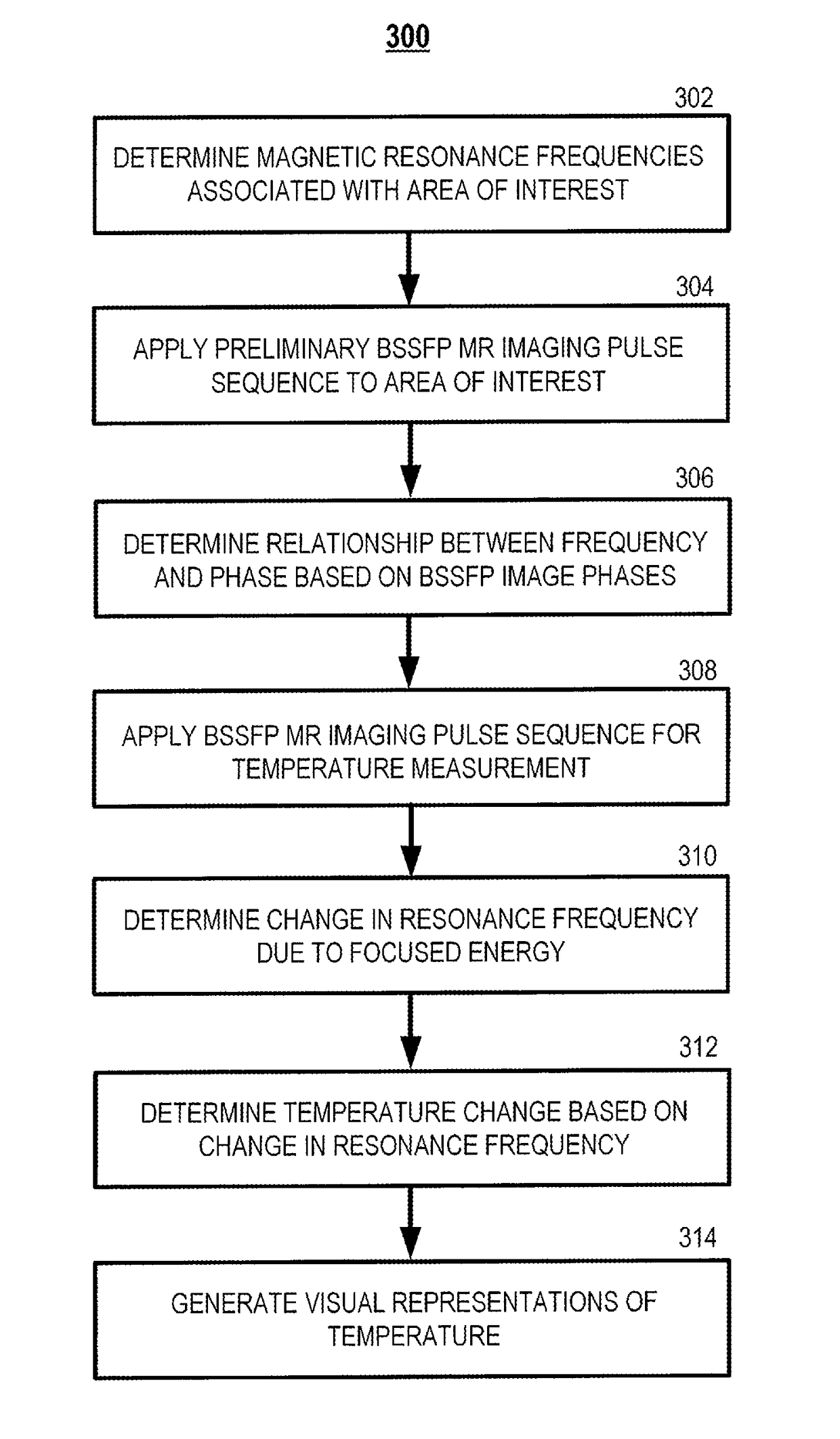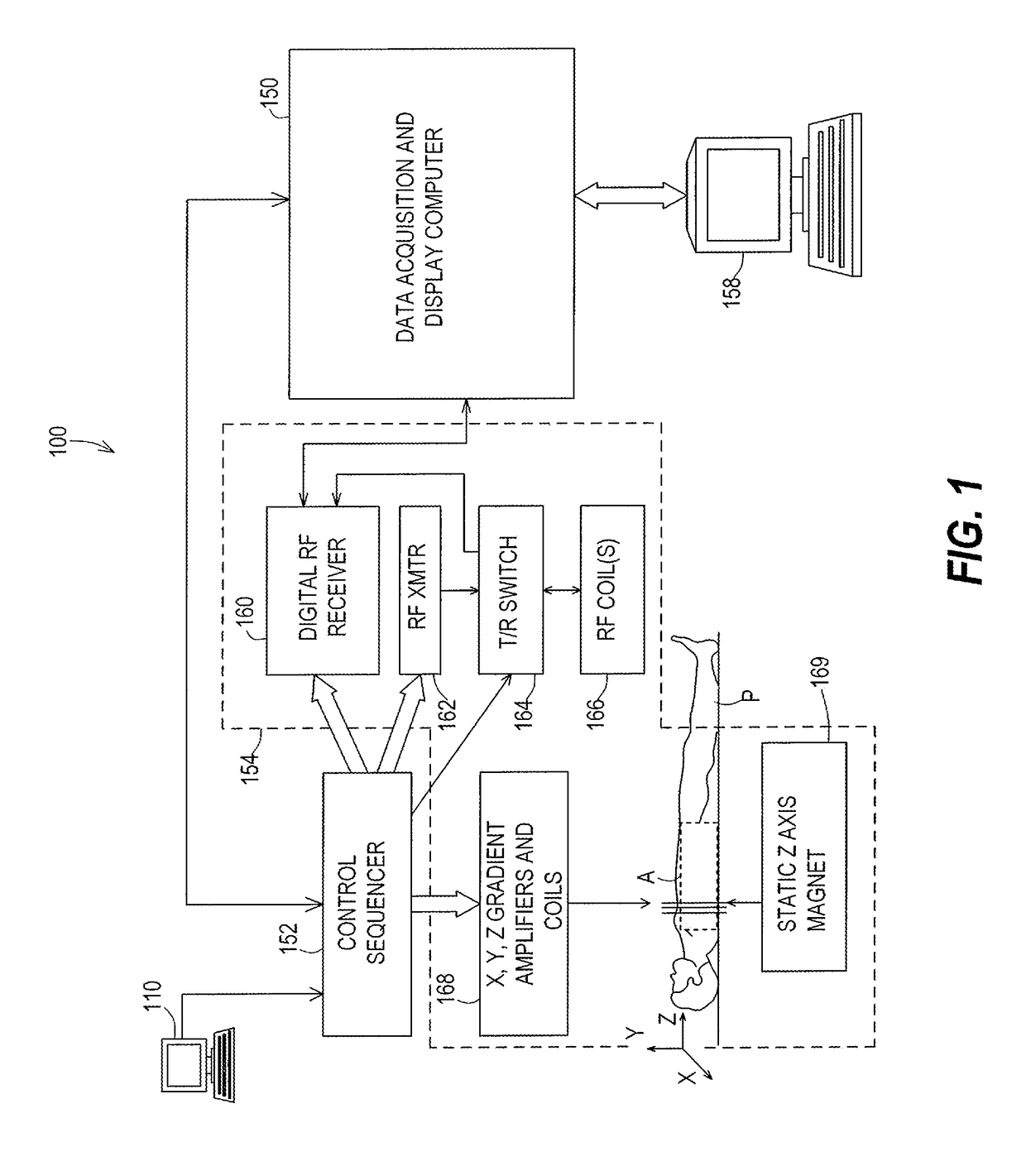Systems and methods for magnetic resonance thermometry using balanced steady state free precession
a steady state free, balanced technology, applied in the field of magnetic resonance thermometry using balanced steady state free precession, can solve the problems of unsatisfactory effect, unsatisfactory detection and quantification of small and/or fast temperature changes, and unsatisfactory effect, and achieve the effect of accurate measurement and greater sensitivity and speed
- Summary
- Abstract
- Description
- Claims
- Application Information
AI Technical Summary
Benefits of technology
Problems solved by technology
Method used
Image
Examples
example implementations
AND RESULTS
[0101]Various aspects of the present disclosure may be still more fully understood from the following description of some example implementations and corresponding results and the images of FIGS. 7-12. Some experimental data are presented herein for purposes of illustration and should not be construed as limiting the scope of the present disclosure in any way or excluding any alternative or additional embodiments.
example 1
[0102]A first example (hereinafter referred to as “Example 1”) of practicing aspects of the present disclosure will now be described along with corresponding results and with reference to illustrations in FIGS. 7-9.
[0103]Experiments were performed in a gel phantom using an MR-compatible 1 MHz FUS system with integrated RF coil (RK-100, FUS Instruments Inc., Toronto) and 3T MR whole-body scanner (Siemens Trio). To demonstrate that bSSFP thermometry can deliver quantitative accuracy similar to the conventional GRE method, both pulse sequences were used to monitor focal heating during a 10 s, 4 W sonication. The GRE pulse sequence parameters (TR / TE=17 / 9 ms with a FA=15°) provided a temporal resolution of 1 s, whereas the bSSFP pulse sequence parameters (TR / TE=4 / 2 ms with a FA=4°) provided a temporal resolution of 0.24 s. FIG. 7 shows the measured temperature evolution at the center of the focal spot for 10 s sonication at 4 W. The bSSFP acquisition has four times better temporal resolu...
example 2
[0105]A second example (hereinafter referred to as “Example 2”) of practicing aspects of the present disclosure will now be described along with corresponding results and with reference to illustrations in FIGS. 10-12.
[0106]For a bSSFP pulse sequence without phase cycling, the theoretical image phase at TE=TR / 2 is
=tan−1((E2 sin β)(1−E2 cos β))+β / 2 [Eq. 6]
where E2=e−TR / T2, β=2πΔfTR, and Δf is the difference between the true resonance frequency and the operating frequency, often referred to as the off-resonance frequency. The bSSFP image phase undergoes an abrupt transition near resonance (Δf=0 Hz) (see FIG. 11). The on-resonance phase slope is (d) / (d(Δf))=2πT2, resulting in higher sensitivity than the GRE method, which has a TE-dependent phase slope of 2πTE. Although the bSSFP phase behavior is nonlinear in the Δf and depends on the properties of the tissue (namely T2), its functional form can be measured by acquiring a series of bSSFP images with different effective frequency off...
PUM
 Login to View More
Login to View More Abstract
Description
Claims
Application Information
 Login to View More
Login to View More - R&D
- Intellectual Property
- Life Sciences
- Materials
- Tech Scout
- Unparalleled Data Quality
- Higher Quality Content
- 60% Fewer Hallucinations
Browse by: Latest US Patents, China's latest patents, Technical Efficacy Thesaurus, Application Domain, Technology Topic, Popular Technical Reports.
© 2025 PatSnap. All rights reserved.Legal|Privacy policy|Modern Slavery Act Transparency Statement|Sitemap|About US| Contact US: help@patsnap.com



